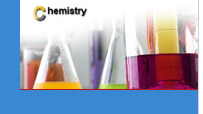润滑添加剂的一个日益增长的重要用途是用在热塑聚合物的加工中,例如聚氯乙烯( PVC )。蜡产品用作挤塑添加剂,主要用于挤出塑料产品,有石油蜡、聚乙烯蜡、费 - 托蜡、金属化硬脂酸盐、脂肪酰胺( fatty acid amide )和脂肪酸酯。 2005 年大约使用了 20.87 万吨润滑剂,其价值为 41 亿美元,比 2000 年估计的 18.14 万吨多很多。金属化硬脂酸盐是这种润滑剂中用得最多的,估计 2005 年的用量是 7.71 万吨。其次是石油蜡和聚乙烯蜡,估计 2005 年的用量是 6.35 万吨。再其次是脂肪酰胺( fatty acid amide ),用量是 3.18 万吨;脂肪酸酯的用量是 2.72 万吨,脂肪酸用量是 6803 吨,其它各种蜡的用量是 4536 吨。
润滑添加剂用在热塑聚合物中,例如聚氯乙烯( PVC )、 ABS 、聚酯、聚碳酸酯、尼龙、各种调和物和合金,尽管 PVC 产品是润滑剂的最大消费者(约占 75-80% )。添加了润滑剂的主要 PVC 产品,包括钢管和管道,传输气体、水、灌溉、管道运输、排水、废水废气、污水、喷泉等。建筑物的 外墙是第二大用途,包括居民 用于 住宅和商业建筑、活动房裙、以及相关的外墙附属物(如拱腹、窗口、门),包括乙烯基和合成物窗口、水槽、水落管、以及其它各种产品。膜和片状产品(特别是片状产品)、乙烯基栅栏和装饰产品也是挤出润滑剂的消费者。
下表列出的是 1990 到 2005 年之间,聚氯乙烯树脂在各种挤出产品中的应用。基于挤出 PVC 产品的增长, 1990 年以来塑料润滑产品的年增长率是 5.1% , 1990 年至 2000 年的平均年增长率是 6.6% ,但是 2000 年至 2005 年已经下降到每年 2.0% 。
1990 年至 2000 年间,钢管和管道的平均年增长率是 6.0% ,但 2000 年至 2005 年已经下降到每年增长 2.1% 。 1990 年至 2000 年,外墙产品平均年增长率是 6.3% ,但 2000 年至 2005 年平均每年减少 0.8% 。 1990 年至 2000 年,挤出门窗平均年增长率是 6.2% ,但 2000 年至 2005 年之间平均每年增长 9.0% 。
聚氯乙烯挤出产品的产量( 1990-2005 ) 吨
最终用途 |
1990 |
1996 |
1997 |
1998 |
1999 |
2000 |
2001 |
2002 |
2003 |
2004 |
2005 |
钢管 |
1782404 |
2433440 |
2624120 |
2680416 |
2737620 |
2778026 |
2889256 |
2814800 |
2829328 |
2974154 |
3062230 |
外墙 |
366832 |
789960 |
844440 |
975192 |
1064630 |
927068 |
964296 |
987904 |
935240 |
974284 |
894834 |
门窗 |
138016 |
161170 |
231540 |
244252 |
251970 |
253786 |
263774 |
302364 |
301456 |
392710 |
411324 |
安装品 |
79450 |
124850 |
131660 |
139832 |
145280 |
138016 |
143464 |
133476 |
133476 |
0 |
0 |
栅栏和装饰品 |
0 |
0 |
0 |
0 |
0 |
0 |
0 |
0 |
0 |
167980 |
148004 |
膜和片状产品 |
165710 |
199306 |
174790 |
196128 |
226546 |
198398 |
188410 |
245614 |
277848 |
339138 |
319162 |
所有其它产品 |
148458 |
247430 |
290560 |
286020 |
349126 |
359568 |
365470 |
383176 |
372734 |
305088 |
294646 |
总计 |
2453870 |
3956156 |
4297110 |
4294840 |
4775172 |
4654862 |
4814670 |
4867334 |
4850082 |
5153354 |
5130200 |
A significant and growing use for lubricant additives is in the processing of thermoplastic polymers such as polyvinyl chloride (PVC). Waxes used as extrusion plastic additives, primarily in the production of extruded plastic products, include petroleum waxes, polyethylene waxes, Fischer-Tropsch waxes, metallic stearates, fatty acid amides, and fatty acid esters. Approximately 460 million pounds of lubricants valued at $410 million were used in 2005, up sharply from an estimated 400 million pounds in 2000. Metallic stearates are the largest category of lubricants used with consumption in 2005estimated at 170 million pounds. The next largest category is petroleum and polyethylene waxes with consumption in 2005 estimated at 140 million pounds. Fatty acid amides are next with consumption of 70 million pounds, followed by fatty acid esters at 60 million pounds, fatty acids at 15 million pounds and miscellaneous, 10 million pounds.
Lubricants are used in thermoplastic polymers such as PVC, acrylonitrile-butadiene-styrene (ABS), polyesters, polycarbonates, nylons and various blends and alloys although polyvinyl chloride products are the largest consumers, accounting for 75-80 of lubricant consumption. The principal PVC products in which lubricants are used include rigid pipe and conduit, which are used for the transport of gas, waters, irrigation piping, drain, waste and vent, sewer drains, and conduits. Siding, the second largest use, includes siding for residential and commercial buildings, mobile home skirts, and related siding accessories such as soffits. Window and door products include all vinyl and composite windows, gutters and downspouts and a variety of miscellaneous products. Film and sheet products, particularly sheet products, and vinyl fencing and deck products are also consumers of extrusion lubricants. |
